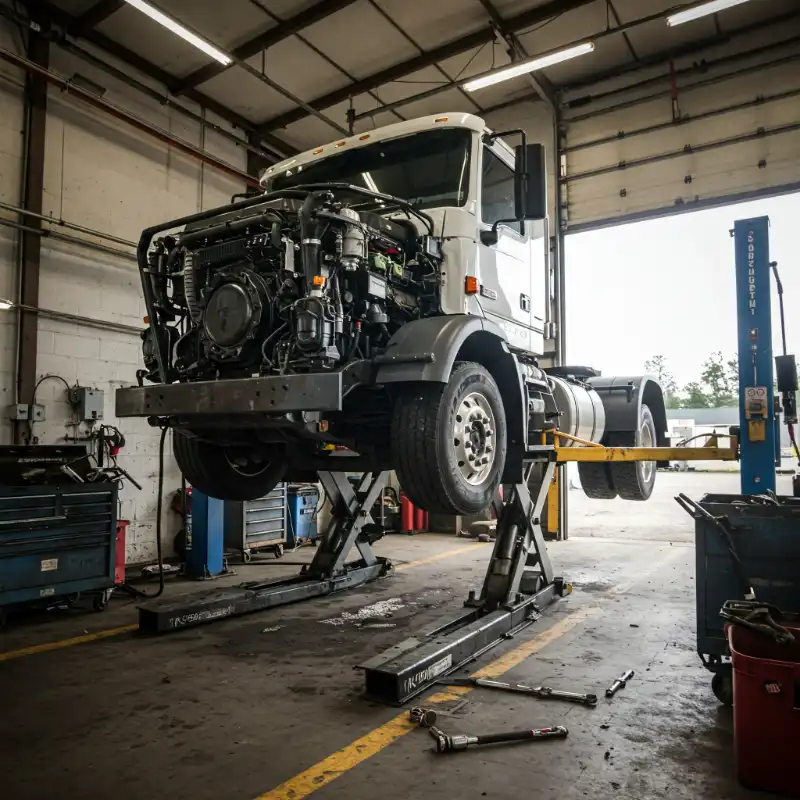The Importance of Tire Chains in Winter Conditions
Winter conditions pose significant challenges for heavy-duty trucks, with icy and snowy roads demanding extra precautions to ensure safety and efficiency. One indispensable tool in the winter trucker's toolkit is the tire chain. These purpose-built chains are crucial in enhancing traction and mitigating the risks associated with adverse weather conditions.
Traction Enhancement for Safety
The primary reason heavy-duty trucks benefit from tire chains is the traction they provide on slippery surfaces. As winter weather transforms roads into hazardous landscapes, tire chains significantly improve a truck's ability to grip the road. This enhanced traction not only prevents slippage but also facilitates better control, reducing the likelihood of accidents, especially during acceleration and deceleration.
Preservation of Tire Life
Beyond safety concerns, tire chains contribute to preserving the lifespan of the truck's tires. When driving on icy or snowy surfaces, tires endure additional stress, which can lead to accelerated wear and tear. By providing increased traction, tire chains reduce the strain on the tires, ultimately extending their longevity and optimizing the truck's overall performance.
Choosing the Right Tire Chains for Your Truck
Selecting the appropriate tire chains for heavy-duty trucks requires a careful consideration of various factors. The diverse range of tire chains available in the market, coupled with the specific demands of winter conditions, necessitates a thorough understanding of the options at hand.
Type and Size Considerations
Choosing the right type and size of tire chains is crucial for ensuring optimal performance. Consider the specific requirements of your heavy-duty truck, including tire size, weight distribution, and the severity of winter conditions you anticipate facing. For example, link chains are effective for general winter driving, while ladder-style chains are ideal for extreme snow and ice.
Materials and Designs
Tire chains come in different materials, each with its own set of advantages and disadvantages. Steel chains are durable and suitable for severe winter conditions, while alloy chains offer a balance of strength and weight. Additionally, consider the design of the chains – some are more suitable for highway driving, while others are designed for off-road or mixed-use scenarios.
Proper Installation Procedures
Installing tire chains correctly is essential for both effectiveness and safety. Improper installation can lead to accidents, damage to the vehicle, and decreased performance during winter driving conditions.
Step-by-Step Guide
- Preparation: Lay out the chains and inspect them for any damage or defects before starting the installation process.
- Positioning the Vehicle: Park the truck on a flat surface, engaging the parking brake for added stability.
- Locate Attachment Points: Identify the proper attachment points on the tires, ensuring the chains are evenly distributed.
- Drape the Chains: Lay the chains over the tire, making sure they are centered and untangled.
- Connection: Connect the ends of the chains and secure them tightly. For chains with tensioners, adjust as necessary for a snug fit.
- Final Checks: Rotate the tires slightly to ensure the chains are properly aligned. Retighten if needed.
Safety Measures
During the installation process, prioritize safety to prevent accidents and injuries. Wear gloves to protect your hands from cold and potential sharp edges on the chains. Additionally, keep a reflective vest and a flashlight on hand to increase visibility, especially when installing chains in low-light conditions.
Maintenance and Inspection Tips
Regular maintenance and inspection of tire chains are critical to ensuring their effectiveness and longevity. Neglecting this aspect can lead to decreased performance and potential safety hazards.
Regular Inspections
- Visual Check: Examine the chains for signs of damage, such as broken links or bent components.
- Tension Adjustment: Periodically check the tension of the chains to ensure a snug fit. Adjust as necessary to maintain optimal performance.
- Corrosion Prevention: Apply rust-resistant coatings to prevent corrosion, especially if the chains are exposed to salt on winter roads.
Identifying Wear and Tear
- Link Wear: Check for elongation or wear in individual links, as this can compromise the integrity of the chain.
- Tensioner Condition: Inspect tensioners for signs of wear or damage, ensuring they can maintain proper tension.
Replacement Criteria
- Excessive Wear: If the chains show significant wear, it's time to replace them to maintain optimal performance.
- Broken Links: Replace chains with broken or damaged links immediately to prevent safety risks.
Safe Driving Practices with Tire Chains
Once installed, driving with tire chains requires a specific set of practices to maximize safety and performance on winter roads.
- Speed Limits: Adhere to recommended speed limits when using tire chains. Excessive speed can lead to increased stress on the chains and tires, increasing the risk of accidents.
- Braking Strategies: Practice gentle and controlled braking to avoid skidding or loss of control. Allow for increased braking distances, especially when roads are icy or covered in snow.
- Navigating Turns: Approach turns with caution, reducing speed and maintaining a controlled trajectory. Sharp turns can challenge the stability of the truck, and tire chains are designed to enhance, not replace, safe driving practices.
Recap
In conclusion, heavy-duty truck tire chains are invaluable assets during winter conditions, significantly improving traction, preserving tire life, and enhancing overall safety. When choosing tire chains, consider the type, size, materials, and design that best suit your truck and the expected winter conditions.
To learn more about our tire repairs and services, click here!










.webp)





























